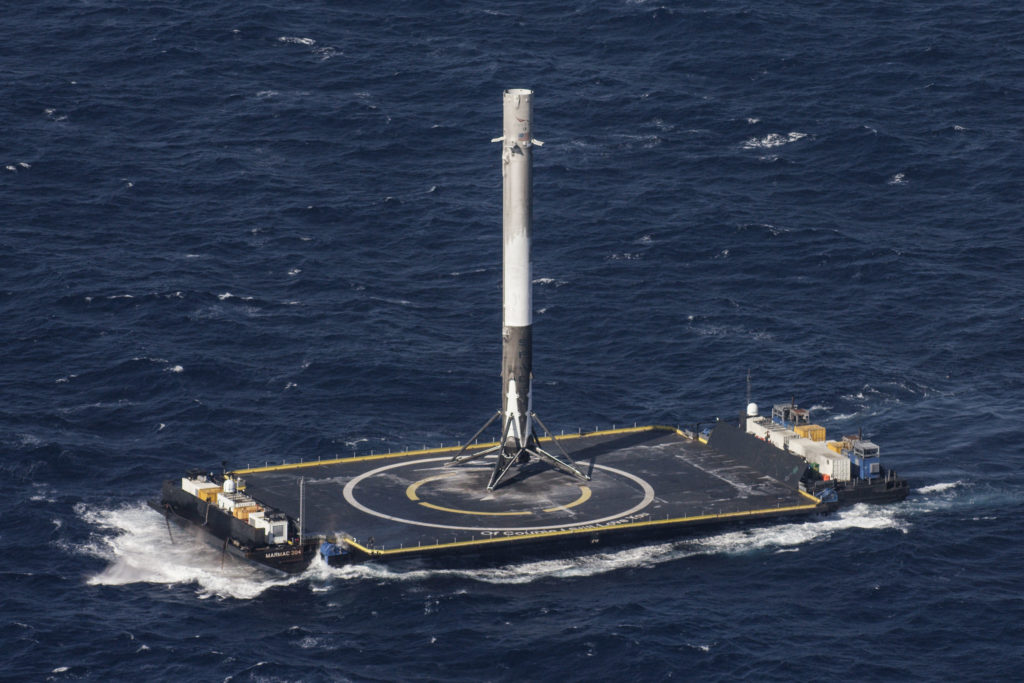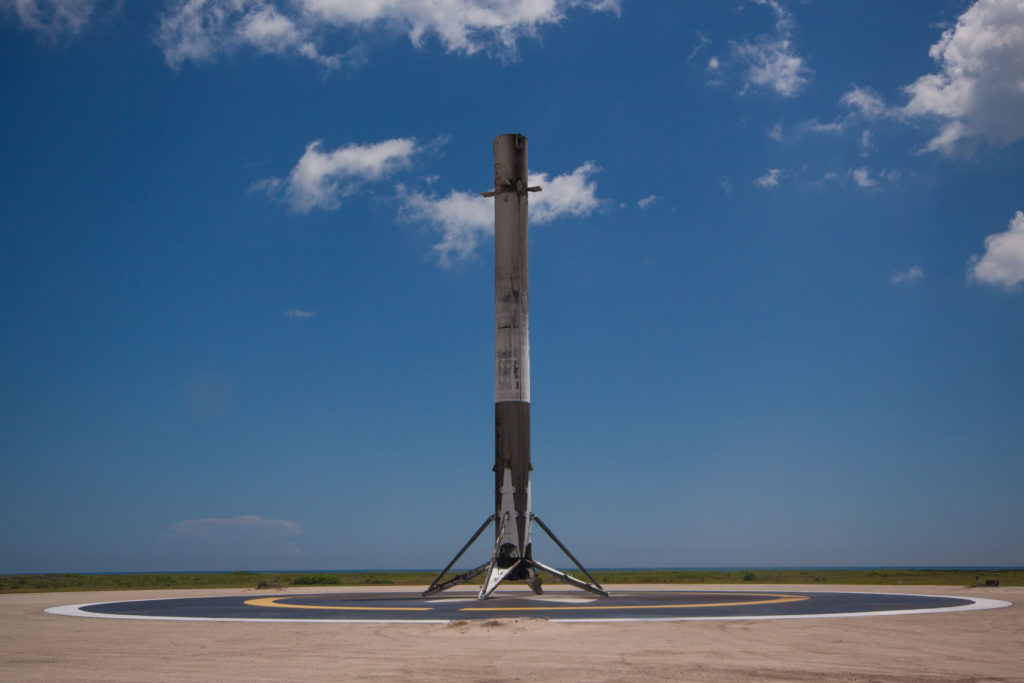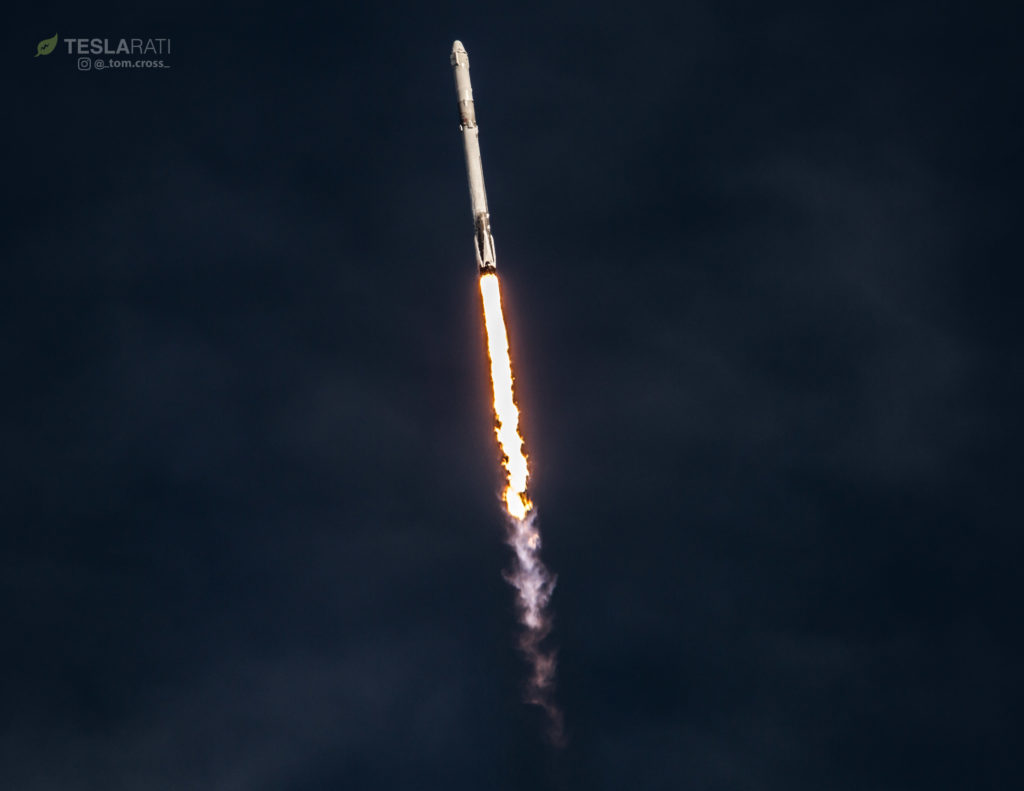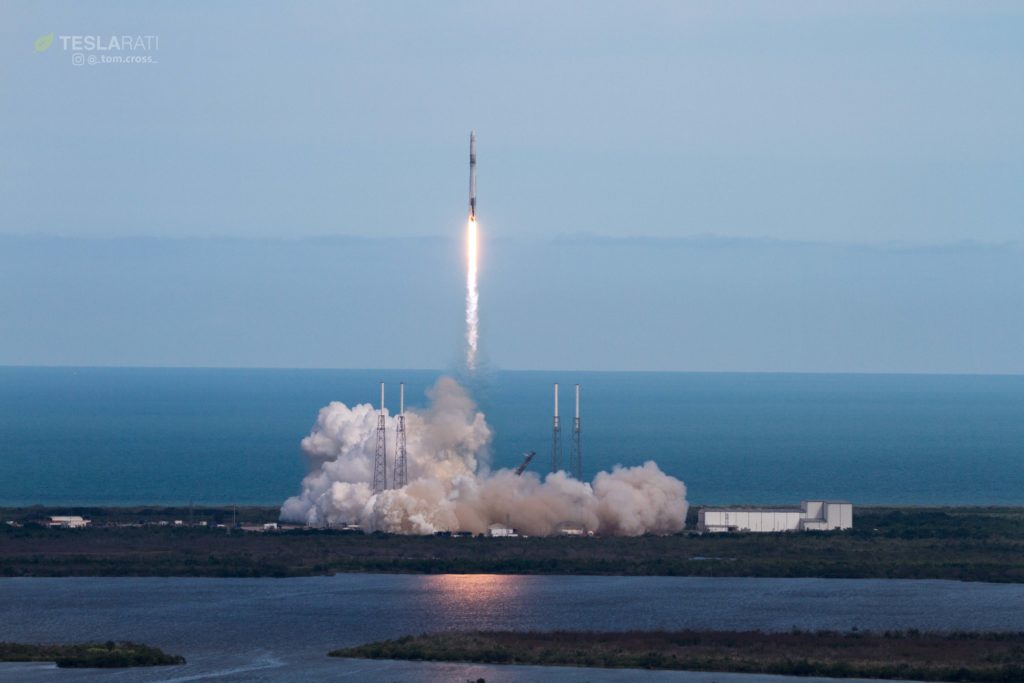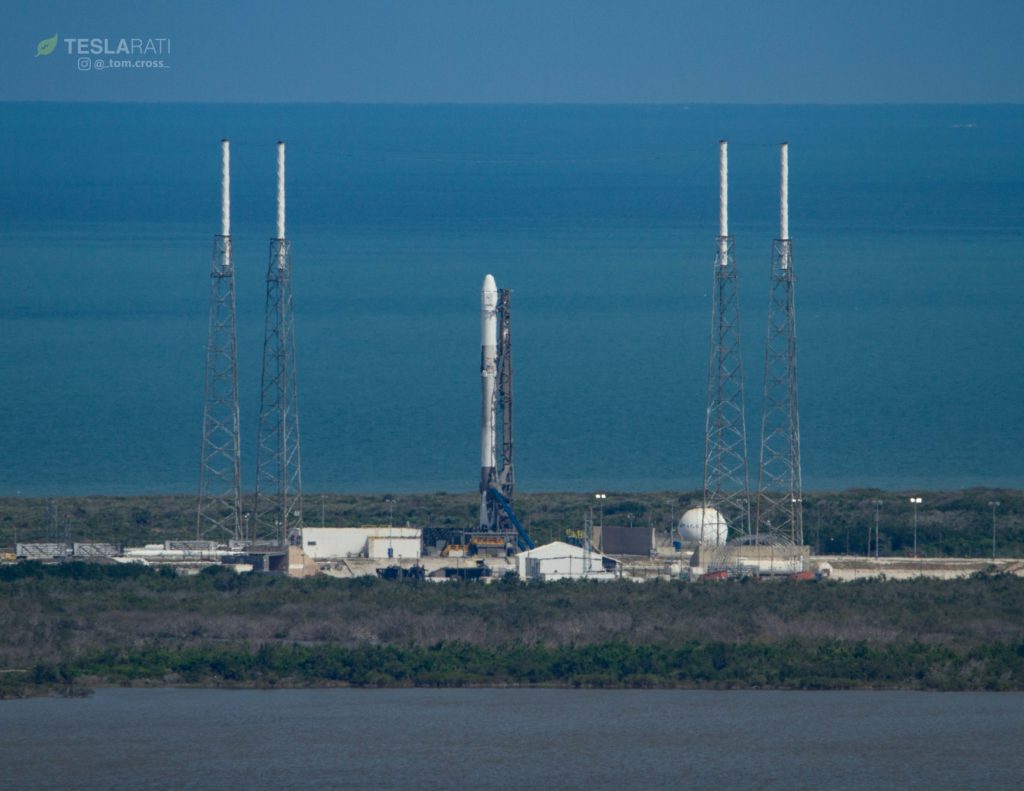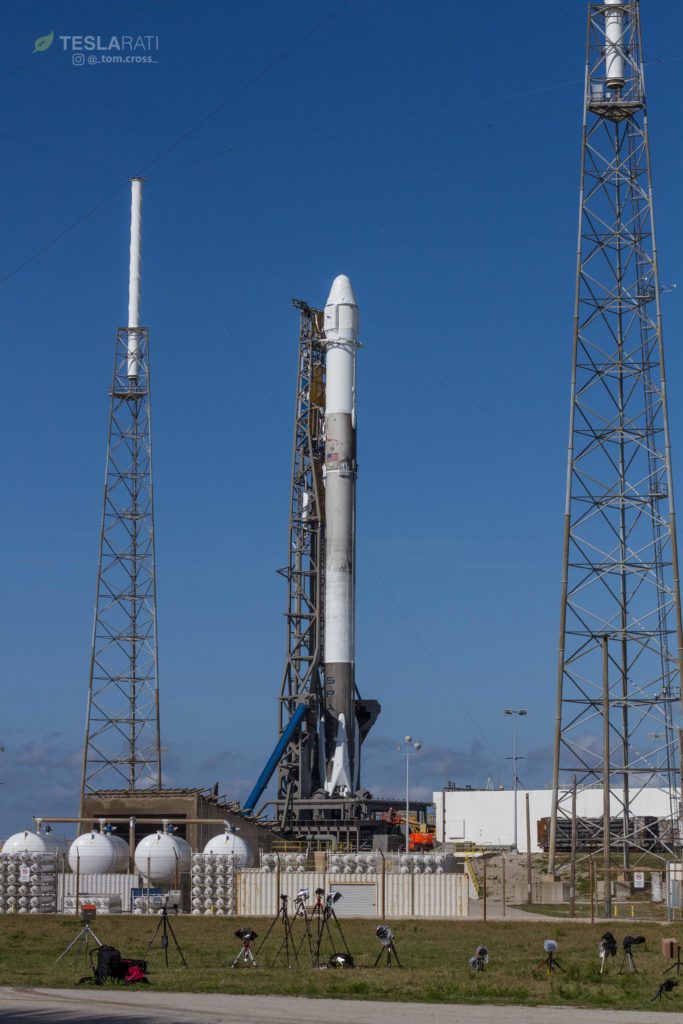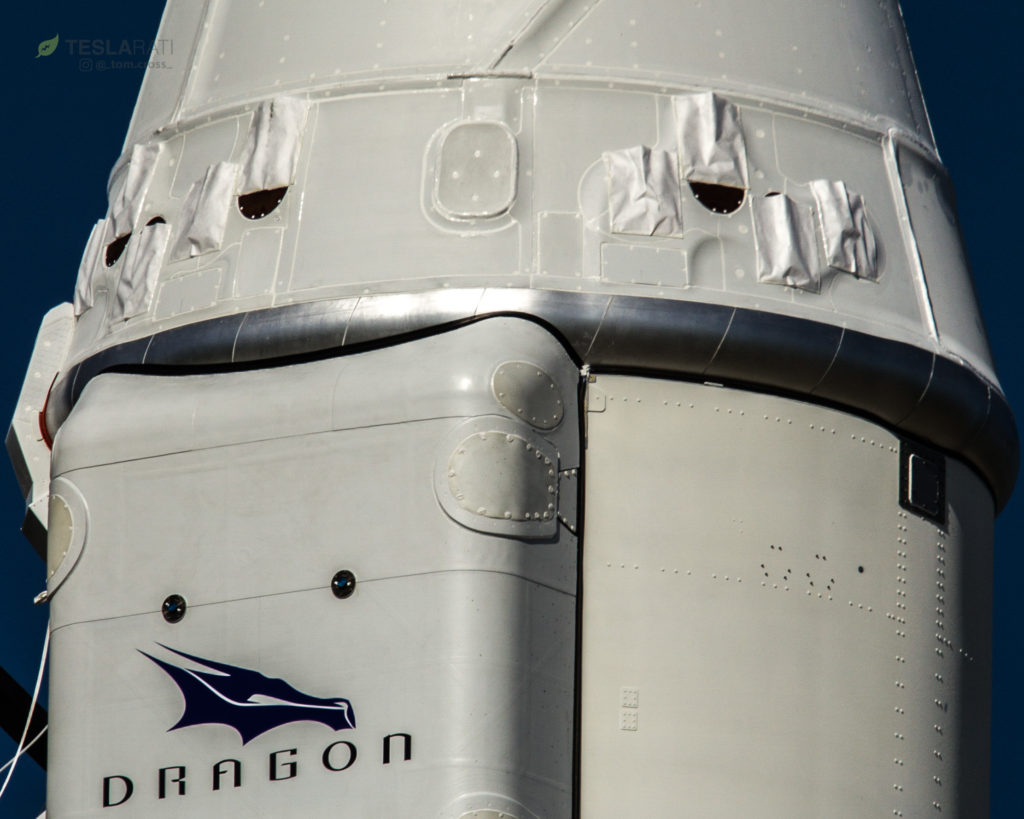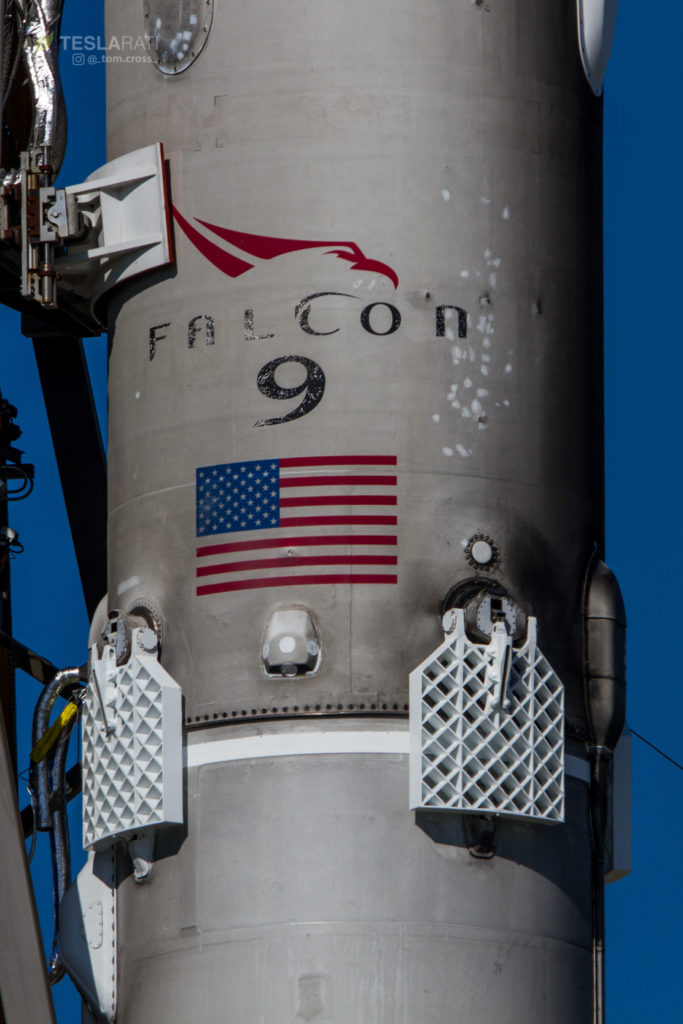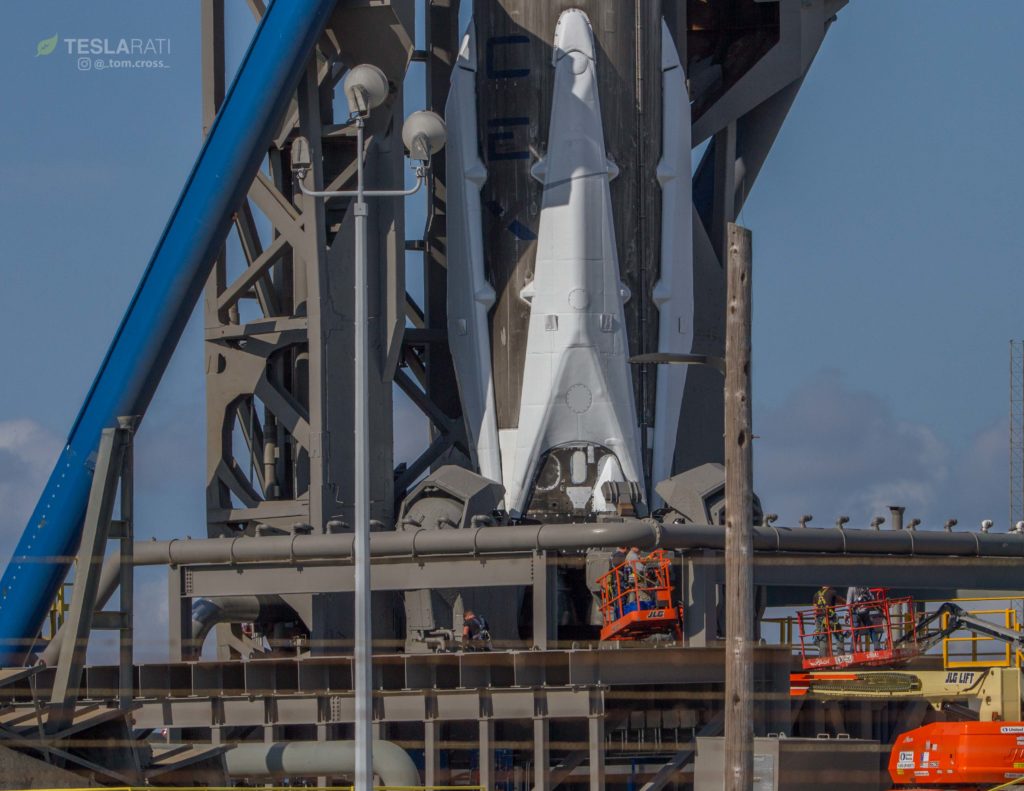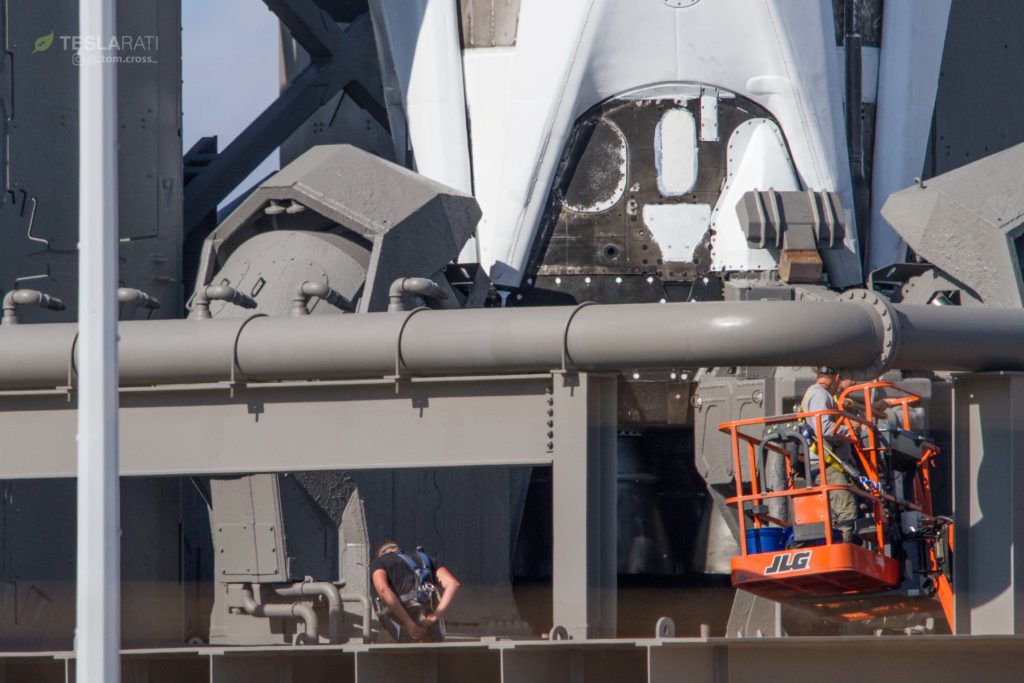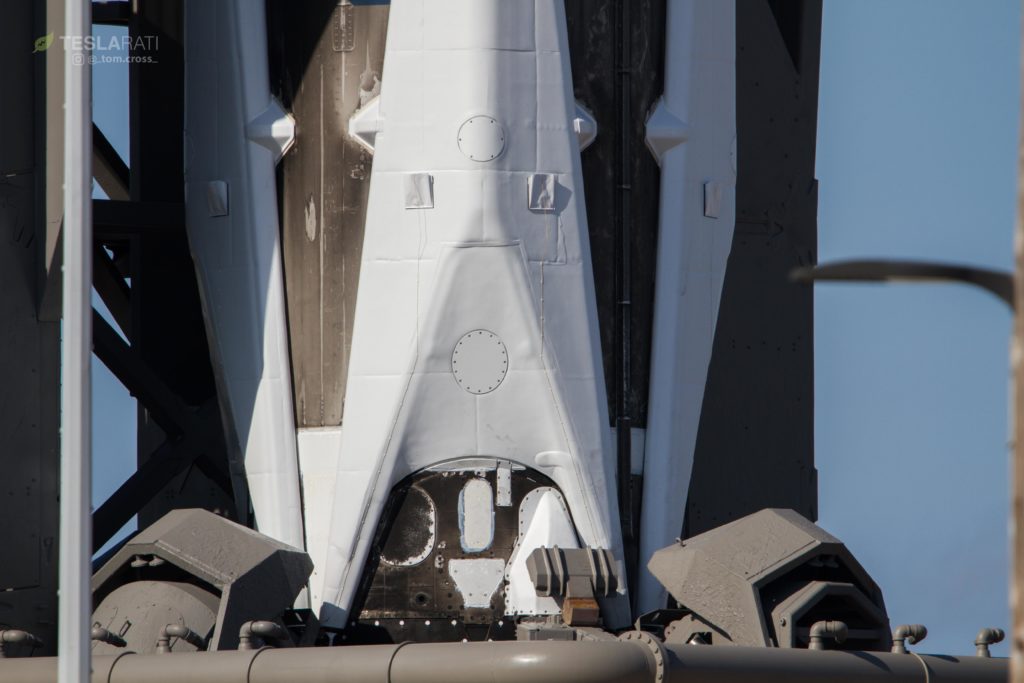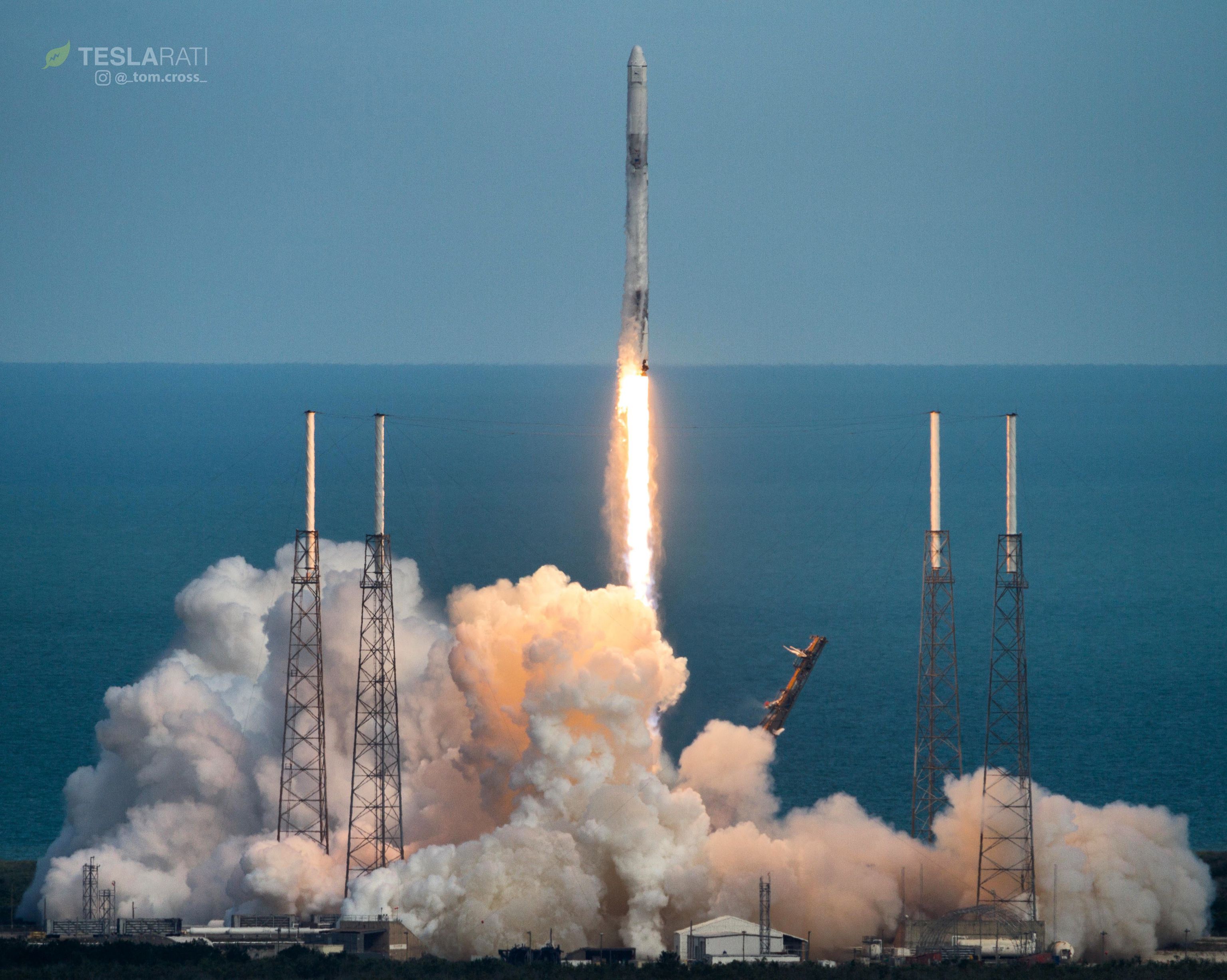

News
SpaceX continues water landing test in latest Space Station resupply mission
SpaceX has completed their second launch in less than four days, and the company’s 14th Cargo Dragon mission has successfully made it to a safe parking orbit where it will make its way to the International Space Station over the next two days.
Carrying nearly 5,800 pounds of perishables, experiments, and scientific equipment to be bolted to the outside of the ISS, this particular Cargo Dragon flew once before in 2016, while the booster that lifted it above Earth’s thin atmosphere was tasked with launching CRS-12 in August 2017. According to Jessica Jensen, SpaceX’s Director of Dragon Mission Management, this particularly Dragon capsule was the first to fly with upgraded water sealing, meaning that it was considerably easier (and thus cheaper) for SpaceX to refurbish and refly. The only items that had to be replaced this time around were the heatshield, trunk, and parachutes, and this experience will undoubtedly translate into Dragon 2 (Cargo Dragon), likely ensuring exceptional reuse characteristics for that the company’s next-gen capsule.
- CRS-8 also happened to mark the first successful ASDS recovery of a Falcon 9 booster. (SpaceX)
- Booster 1039 lands after successfully launching CRS-12’s Cargo Dragon into orbit. 1039 completed its final mission on Monday afternoon, April 2. (SpaceX)
Sadly, CRS-14’s doubly flight-proven launch also marked yet another expended booster – B1039 happened to be the first Block 4 version of Falcon 9’s stage to fly a mission. Jensen described that SpaceX – accustomed to making these decisions on a case-by-case basis – had chosen to expend this particular booster after concluding that the benefits of testing extreme booster trajectories and recovery profiles outweighed the difficulty (and cost) of refurbishing a Block 4 booster for a third launch. In this case, B1039 would have been the best option if SpaceX had any desire to fly a booster more than twice before the introduction of the purpose-driven, next-generation Block 5 reusability upgrade – Block 4 was clearly not built to fly more than twice without an uneconomical amount of refurbishment.
https://twitter.com/_TomCross_/status/980912458280947722
While no specific details were given and live coverage shown of the soft-landing, it’s presumed that B1039 continued in the footsteps of water landings that followed GovSat-1 and Hispasat 30W-6 in January 2018 and March 2018. These uniquely aggressive landing attempts are all believed to have ignited three Merlin 1D engines rather than the single engine typically ignited for landing burns, providing a more efficient use of propellant reserves at the cost of extreme acceleration (G) forces and far slimmer margins of error. The ultimate promise of these tests, if successful, is to allow SpaceX the option of recovering boosters during missions with heavier payloads and higher orbits.

SpaceX continues a cautious regiment of tests for the newest Falcon 9 upgrade, Block 5. (Reddit /u/HollywoodSX)
The imminent NET April 24 inaugural launch of SpaceX’s rapid reuse Falcon 9 “Block 5” will mark the beginning of a new era of rocketry for SpaceX, where expendable missions are likely to become a rarity. Expending a single Block 5 booster could fairly be perceived as throwing away the potential revenue and income from anywhere from 5-100 future re-flights. As such, SpaceX has every reason to expend non-Block 5 boosters with the hope of ensuring that fewer new-generation rockets end up expended after launch.
This rocket was meant to test very high retrothrust landing in water so it didn’t hurt the droneship, but amazingly it has survived. We will try to tow it back to shore. pic.twitter.com/hipmgdnq16
— Elon Musk (@elonmusk) January 31, 2018
Intriguingly, Jensen also noted in a prelaunch briefing that SpaceX’s Cargo Dragons are certified for as many as three orbital reuses – a possibility as SpaceX steps towards completing all 20 of its contracted CRS-1 missions, the final five of which are scheduled to resupply the ISS between now and early 2020. After the final CRS-1 launch, NASA has already awarded SpaceX and Orbital ATK contracts for CRS-2, a second Commercial Resupply Services contract that will begin in 2020 and fly on OATK’s upgraded Cygnus and SpaceX Dragon 2, potentially repurposing recovered Crew capsules in the case of SpaceX.
Up next on the SpaceX calendar are a number of conferences and presentations over the next two or three weeks, followed by SpaceX NASA TESS mission on April 16 and the debut of Falcon 9 Block 5 for the launch of Bangabandhu-1, April 24. SES-12 may be launched sometime in early May or late April, and the next West coast launch of Iridium-6/GRACE-FO is expected to occur NET May 10.
- CRS-14. (Tom Cross)
- CRS-14. (Tom Cross)
- CRS-14. (Tom Cross)
- CRS-14. (Tom Cross)
- CRS-14. (Tom Cross)
- CRS-14. (Tom Cross)
- CRS-14. (Tom Cross)
- SpaceX technicians work at the base of Falcon 9 B1039 ahead of launch, CRS-14. (Tom Cross)
- CRS-14. (Tom Cross)
- CRS-14. (Tom Cross)
Follow us for live updates, behind-the-scenes sneak peeks, and a sea of beautiful photos from our East and West coast photographers.
Teslarati – Instagram – Twitter
Tom Cross – Twitter
Pauline Acalin – Twitter
Eric Ralph – Twitter
News
Tesla UK sales see 14% year-over-year rebound in June: SMMT data
The SMMT stated that Tesla sales grew 14% year-over-year to 7,719 units in June 2025.

Tesla’s sales in the United Kingdom rose in June, climbing 14% year-over-year to 7,719 units, as per data from the Society of Motor Manufacturers and Traders (SMMT). The spike in the company’s sales coincided with the first deliveries of the updated Model Y last month.
Model Y deliveries support Tesla’s UK recovery
Tesla’s June performance marked one of its strongest months in the UK so far this year, with new Model Y deliveries contributing significantly to the company’s momentum.
While the SMMT listed Tesla with 7,719 deliveries in June, independent data from New AutoMotive suggested that the electric vehicle maker registered 7,891 units during the month instead. However, year-to-date figures for Tesla remain 2% down compared to 2024, as per a report from Reuters.
While Tesla made a strong showing in June, rivals are also growing. Chinese automaker BYD saw UK sales rise nearly fourfold to 2,498 units, while Ford posted the highest EV growth among major automakers, with a more than fourfold increase in the first half of 2025.
Overall, the UK’s battery electric vehicle (BEV) demand surged 39% to to 47,354 units last month, helping push total new car sales in the UK to 191,316 units, up 6.7% from the same period in 2024.
EV adoption accelerates, but concerns linger
June marked the best month for UK car sales since 2019, though the SMMT cautioned that growth in the electric vehicle sector remains heavily dependent on discounting and support programs. Still, one in four new vehicle buyers in June chose a battery electric vehicle.
SMMT Chief Executive Mike Hawes noted that despite strong BEV demand, sales levels are still below regulatory targets. “Further growth in sales, and the sector will rely on increased and improved charging facilities to boost mainstream electric vehicle adoption,” Hawes stated.
Also taking effect this week was a new US-UK trade deal, which lowers tariffs on UK car exports to the United States from 27.5% to 10%. The agreement could benefit UK-based EV producers aiming to expand across the country.
News
Tesla Model 3 ranks as the safest new car in Europe for 2025, per Euro NCAP tests
Despite being on the market longer than many of its rivals, the Tesla Model 3 continues to set the bar for vehicle safety.

The Tesla Model 3 has been named the safest new car on sale in 2025, according to the latest results from the Euro NCAP. Among 20 newly tested vehicles, the Model 3 emerged at the top of the list, scoring an impressive 359 out of 400 possible points across all major safety categories.
Tesla Model 3’s safety systems
Despite being on the market longer than many of its rivals, the Tesla Model 3 continues to set the bar for vehicle safety. Under Euro NCAP’s stricter 2025 testing protocols, the electric sedan earned 90% for adult occupant protection, 93% for child occupant protection, 89% for pedestrian protection, and 87% for its Safety Assist systems.
The updated Model 3 received particular praise for its advanced driver assistance features, including Tesla’s autonomous emergency braking (AEB) system, which performed well across various test scenarios. Its Intelligent Speed Assistance and child presence detection system were cited as noteworthy features as well, as per a WhatCar report.
Other notable safety features include the Model 3’s pedestrian-friendly pop-up hood and robust crash protection for both front and side collisions. Euro NCAP also highlighted the Model 3’s ability to detect vulnerable road users during complex maneuvers, such as turning across oncoming traffic.
Euro NCAP’s Autopilot caution
While the Model 3’s safety scores were impressive across the board, Euro NCAP did raise concerns about driver expectations of Tesla’s Autopilot system. The organization warned that some owners may overestimate the system’s capabilities, potentially leading to misuse or inattention behind the wheel. Even so, the Model 3 remained the highest-scoring vehicle tested under Euro NCAP’s updated criteria this year.
The Euro NCAP’s concerns are also quite interesting because Tesla’s Full Self-Driving (FSD) Supervised, which is arguably the company’s most robust safety suite, is not allowed for public rollout in Europe yet. FSD Supervised would allow the Model 3 to navigate inner city streets with only minimal human supervision.
Other top scorers included the Volkswagen ID.7, Polestar 3, and Geely EX5, but none matched the Model 3’s total score or consistency across categories. A total of 14 out of 20 newly tested cars earned five stars, while several models, including the Kia EV3, MG ZS, and Renault 5, fell short of the top rating.
Elon Musk
Why Tesla’s Q3 could be one of its biggest quarters in history
Tesla could stand to benefit from the removal of the $7,500 EV tax credit at the end of Q3.

Tesla has gotten off to a slow start in 2025, as the first half of the year has not been one to remember from a delivery perspective.
However, Q3 could end up being one of the best the company has had in history, with the United States potentially being a major contributor to what might reverse a slow start to the year.
Earlier today, the United States’ House of Representatives officially passed President Trump’s “Big Beautiful Bill,” after it made its way through the Senate earlier this week. The bill will head to President Trump, as he looks to sign it before his July 4 deadline.
The Bill will effectively bring closure to the $7,500 EV tax credit, which will end on September 30, 2025. This means, over the next three months in the United States, those who are looking to buy an EV will have their last chance to take advantage of the credit. EVs will then be, for most people, $7,500 more expensive, in essence.
The tax credit is available to any single filer who makes under $150,000 per year, $225,000 a year to a head of household, and $300,000 to couples filing jointly.
Ending the tax credit was expected with the Trump administration, as his policies have leaned significantly toward reliance on fossil fuels, ending what he calls an “EV mandate.” He has used this phrase several times in disagreements with Tesla CEO Elon Musk.
Nevertheless, those who have been on the fence about buying a Tesla, or any EV, for that matter, will have some decisions to make in the next three months. While all companies will stand to benefit from this time crunch, Tesla could be the true winner because of its sheer volume.
If things are done correctly, meaning if Tesla can also offer incentives like 0% APR, special pricing on leasing or financing, or other advantages (like free Red, White, and Blue for a short period of time in celebration of Independence Day), it could see some real volume in sales this quarter.
You can now buy a Tesla in Red, White, and Blue for free until July 14 https://t.co/iAwhaRFOH0
— TESLARATI (@Teslarati) July 3, 2025
Tesla is just a shade under 721,000 deliveries for the year, so it’s on pace for roughly 1.4 million for 2025. This would be a decrease from the 1.8 million cars it delivered in each of the last two years. Traditionally, the second half of the year has produced Tesla’s strongest quarters. Its top three quarters in terms of deliveries are Q4 2024 with 495,570 vehicles, Q4 2023 with 484,507 vehicles, and Q3 2024 with 462,890 vehicles.
-

 Elon Musk4 days ago
Elon Musk4 days agoTesla investors will be shocked by Jim Cramer’s latest assessment
-

 News1 week ago
News1 week agoTesla Robotaxi’s biggest challenge seems to be this one thing
-

 Elon Musk2 weeks ago
Elon Musk2 weeks agoFirst Look at Tesla’s Robotaxi App: features, design, and more
-

 News2 weeks ago
News2 weeks agoSpaceX and Elon Musk share insights on Starship Ship 36’s RUD
-

 News2 weeks ago
News2 weeks agoWatch Tesla’s first driverless public Robotaxi rides in Texas
-

 News1 week ago
News1 week agoWatch the first true Tesla Robotaxi intervention by safety monitor
-

 News2 weeks ago
News2 weeks agoTesla has started rolling out initial round of Robotaxi invites
-

 Elon Musk2 weeks ago
Elon Musk2 weeks agoTesla to launch in India in July with vehicles already arriving: report

